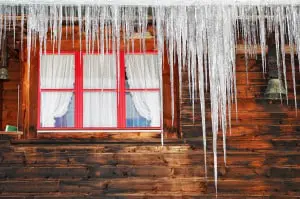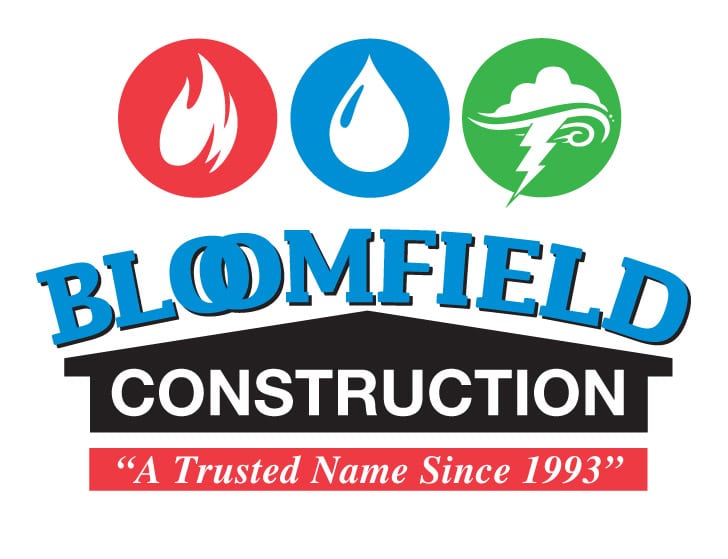Sometimes, brutal Michigan winters can feel like “survival of the fittest.” Is your home prepared to withstand the cold season? Following these important winter home maintenance tips can help prevent damage and costly home repairs.
Check for interior water leaks
 Areas to check:
Areas to check:
- Faucets
- Shower head
- Water heaters
- Toilets
- Swimming pool
- Attic
Water damage can destroy both the foundation and interior of your home, and can be very costly to repair. Keeping a close eye out for leaks and frequently checking common problem areas can help you fix any issues before they cause severe damage. If water stains are visible on interior walls, but you’re having trouble locating the source of the leak, consult a professional for assistance.
Check for interior air drafts
Areas to check:
- Attic hatches
- Crawl spaces
- Doors and windows
- Electrical outlets
- Wiring holes
- Basements
- Furnace outlets
The attic is the highest priority to check for air leaks. Being directly below the roof, which has the most exposure with the outdoor elements, air can easily find its way inside from above. At the same time, seeing as heat rises, the heat you’re paying a pretty penny for could be escaping up and out of the attic. Drafts found in the attic may require sealing plus additional insulation.
Unsure if you’re feeling a draft? Turn off all appliances and close anything that may allow for airflow. Light a candle near the expected air leak and note any change in the direction of the flame. If you prefer to be more efficient, hire a professional to inspect your home for air leaks.
Be sure to pay attention to any changes in your heating bills. If your heat bills have risen and nothing has been changed with the thermostat, heat may be escaping, indicating there may be an air leak(s). This may also be an indication that your home requires additional insulation, as heat can escape through the attic.
Remove built-up snow and ice
While you may not feel like bundling up and going outside to shovel or blow snow, neglecting to do so can do more than create unsafe conditions for pedestrians. Leaving snow and ice on your driveway can cause it to deteriorate faster, which is a much more costly fix than doing a bit of shoveling. Beware of using salt on your driveway as well, as it can also break down the concrete. Try using a different substance such as sand or cat litter to reduce ice.
When removing snow and ice, be sure to clear any large masses that are building up against your home. The snow and ice at the bottom of the pile can start to melt and will seep into any cracks that may exist—or cracks that happen as the result of the cold mass.
Look for cracks in exposed pipes
Check for cracks in exposed pipes around the exterior or in non-insulated areas of your home, such as garages, sunrooms and crawlspaces. These pipes can—and should be—wrapped with pipe insulation.
If you find a leak in a pipe, it may be necessary to make a temporary repair until a more permanent solution can be applied. One temporary solution includes adding a rubber or neoprene pad around the cracked area of the pipe, and securing a pipe clamp around the pad.
In addition to adding pipe insulation and insulation to unprotected areas of the home, another step in preventing pipes from cracking is to keep your thermostat set at a minimum of 65 degrees.
Beware of ice dams on the roof
Ice dams are large masses of ice that lodge at the edge of the roof and prevent melting snow from draining properly. Ice dams can sometimes be tricky to see, but it’s important that they’re identified in order to prevent water damage.
Keep in mind that snow weighs approximately 20 pounds per cubic foot—anyone that has manually shoveled snow would probably agree that it’s heavier than it looks. Also, ice adds even more weight. For every 1-inch of ice depth, add 5.2 pounds onto the total weight. Don’t take the chance that your roof can withstand that pressure—remove any snow and ice to prevent damage.
Change your air filters
Your home’s heating system air filters should be changed either once a month or every three months, depending on the type of system you’re using and how often it’s running. Air filters are responsible for keeping debris and pollution out of the system. Failing to replace them can result in poor air quality—potentially increasing allergies and respiratory issues—and reduced airflow. Improper airflow will ultimately result in inefficient performance and increase your heating bills.
For homeowners, maintaining the home is a year-round task. Want to lessen the load this winter? The Bloomfield Construction team would be happy to help you identify and resolve any issues.



